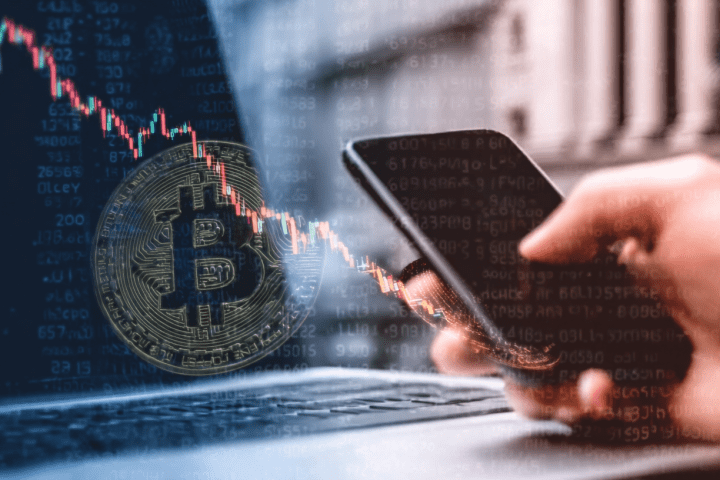The United States economy is experiencing a remarkable transformation as artificial intelligence investment reaches unprecedented levels, creating ripple effects across multiple sectors including the digital asset ecosystem. Major technology companies are committing hundreds of billions of dollars to AI infrastructure, research, and development, generating economic momentum that cushions against recessionary pressures while simultaneously supporting cryptocurrency and blockchain markets. This convergence of AI investment and digital asset growth represents more than coincidental timing—fundamental connections link these technologies through shared infrastructure needs, overlapping investor bases, and complementary innovation trajectories that position both sectors for sustained expansion.
The Scale of AI Investment in America
Artificial intelligence spending across the United States has reached extraordinary magnitudes that justify descriptions as a modern infrastructure buildout comparable to historical transformations like electrification or the internet’s commercialization. Technology giants including Microsoft, Google, Amazon, and Meta are collectively investing over $200 billion annually in AI-related capital expenditures, with projections suggesting continued acceleration through the remainder of the decade.
These massive investments flow into multiple categories creating broad economic impacts. Data center construction represents the most visible component, with companies building massive facilities housing the specialized computing infrastructure that AI models require. These data centers demand enormous power supplies, advanced cooling systems, and sophisticated networking capabilities, generating construction employment and ongoing operational jobs across numerous states.
Semiconductor purchases constitute another major investment stream as companies acquire cutting-edge chips specifically designed for AI workloads. NVIDIA has emerged as the primary beneficiary, with its graphics processing units becoming essential components for training and deploying AI models. The semiconductor supply chain supporting AI extends from chip designers through fabrication facilities to assembly and testing operations, creating high-value manufacturing employment and technological advancement.
Research and development spending on AI algorithms, applications, and platforms generates additional economic activity concentrated in technology hubs but increasingly spreading to secondary markets as companies establish satellite offices accessing diverse talent pools. These R&D investments fund salaries for engineers, data scientists, and researchers while supporting academic partnerships and startup ecosystems developing next-generation AI capabilities.
Economic Stabilization Through Technology Investment
AI investment arrives at a fortuitous moment for the American economy, providing growth impulses precisely when other sectors face headwinds from elevated interest rates, inflation concerns, and global economic uncertainty. This countercyclical technology spending cushions the economy against recession risks that might otherwise materialize from monetary policy tightening.
The mechanisms through which AI investment stabilizes economic growth operate across multiple channels:
- Employment generation: AI infrastructure buildout creates diverse employment ranging from construction workers building data centers to highly skilled engineers developing AI systems. These jobs generate income supporting consumer spending that maintains economic momentum even as interest-sensitive sectors like housing and manufacturing slow.
- Capital goods demand: Massive purchases of servers, networking equipment, semiconductors, and specialized AI hardware sustain manufacturing activity and support industrial production metrics. This equipment demand provides crucial support for technology manufacturers and their supply chains during periods when consumer electronics sales soften.
- Productivity expectations: AI investment reflects corporate confidence that these technologies will generate substantial productivity improvements and competitive advantages. This optimism encourages broader business investment and risk-taking that extends beyond AI-specific spending, creating positive sentiment effects throughout the economy.
- Stock market support: Technology companies making substantial AI investments have driven significant stock market appreciation, particularly in indices heavily weighted toward large-cap technology firms. This wealth effect supports consumer confidence and spending among affluent households holding substantial equity portfolios.
The Federal Reserve and other policymakers recognize AI investment’s stabilizing role, viewing technology spending as evidence that the economy maintains underlying strength despite restrictive monetary policy. This recognition influences policy decisions, potentially allowing authorities to maintain tighter policy longer without triggering recession because AI investment offsets contractionary pressures from higher interest rates.
Blockchain and AI: Complementary Technologies
Beyond macro-economic effects, AI investment directly benefits cryptocurrency and blockchain ecosystems through technological complementarities and shared infrastructure requirements. These technologies, while distinct in purpose and architecture, exhibit natural synergies that create mutual reinforcement as both sectors expand.
The intersection of blockchain and AI creates several compelling use cases:
- Decentralized AI training and inference: Blockchain networks can coordinate distributed computing resources for training AI models, allowing individuals and organizations to contribute processing power in exchange for cryptocurrency rewards. This decentralized approach potentially democratizes AI development by reducing reliance on centralized cloud providers and lowering barriers to entry for AI researchers.
- AI model ownership and provenance tracking: Blockchain’s immutable ledger capabilities enable tracking AI model development, establishing clear ownership records, and creating verifiable provenance chains documenting model training data and algorithmic evolution. These capabilities address growing concerns about AI transparency and accountability.
- Automated smart contract execution: AI systems can analyze complex conditions and trigger smart contract executions based on sophisticated pattern recognition that simple rule-based systems cannot achieve. This integration enables more nuanced decentralized applications that respond intelligently to changing circumstances.
- Data marketplace infrastructure: Blockchain platforms can facilitate secure data exchange between AI developers needing training data and data owners seeking compensation. Cryptocurrency payments enable frictionless micropayments for data contributions while blockchain verification ensures data quality and authenticity.
- Computational resource tokenization: Blockchain enables tokenization of computing resources, allowing GPU owners to monetize idle capacity by providing computational power for AI workloads. These decentralized computing marketplaces create alternative infrastructure models competing with centralized cloud providers.
These technical synergies translate into tangible cryptocurrency market support as projects combining AI and blockchain capabilities attract investor attention and development resources. The narrative around AI-enhanced blockchain applications provides fundamental backing for digital asset valuations beyond pure speculation.
Investor Psychology and Risk Asset Correlation
AI investment’s economic cushioning effect extends to cryptocurrency markets through investor psychology and risk asset dynamics. When technology spending drives economic growth and supports equity valuations, risk appetite increases across asset classes including digital currencies that investors categorize alongside growth stocks and other speculative investments.
The correlation between AI-driven technology stock performance and cryptocurrency prices has strengthened notably. Bitcoin and major altcoins increasingly trade in tandem with AI-focused technology stocks, rising when companies announce strong AI initiatives or demonstrate AI-driven revenue growth, and declining when technology sentiment sours. This correlation reflects cryptocurrency’s evolution from niche alternative asset to mainstream risk asset influenced by the same macroeconomic and sentiment factors affecting equities.
Several psychological mechanisms link AI optimism to cryptocurrency enthusiasm:
- Technology confidence spillover: Excitement about AI’s transformative potential creates generalized optimism about technological innovation, benefiting all technology-adjacent investments including cryptocurrency. Investors enthusiastic about AI disrupting traditional industries often extend similar beliefs to blockchain technology disrupting finance.
- Liquidity and wealth effects: Strong performance of AI-related stocks generates profits for technology investors who may diversify gains into alternative investments including cryptocurrency. The wealth created through AI stock appreciation provides capital that flows into digital asset markets.
- Future-oriented mindset: Investors attracted to AI’s forward-looking promise tend to exhibit similar comfort with other emerging technologies and tolerance for volatility in pursuit of potential asymmetric returns. This investor personality overlap creates natural flows between AI investments and cryptocurrency holdings.
- Institutional validation: Major corporations’ massive AI investments legitimize technology-centric investment theses, making cryptocurrency’s technological value proposition more credible to mainstream investors previously skeptical about digital assets.
Infrastructure Overlap and Resource Competition
AI and cryptocurrency share fundamental infrastructure requirements, particularly regarding computing power and energy resources. This overlap creates both competition and collaboration between sectors while driving innovation in underlying technologies that serve both use cases.
Data centers represent the most obvious infrastructure commonality. Both AI model training and cryptocurrency mining require specialized facilities with substantial power supplies, cooling systems, and high-speed networking. Some facilities serve dual purposes, housing both cryptocurrency mining operations and AI computing clusters, optimizing capital utilization and operational efficiency.
Energy consumption connects both technologies to broader debates about sustainability and resource allocation. AI training for large language models consumes enormous electricity, as does proof-of-work cryptocurrency mining. This shared energy intensity creates common interests in renewable energy development and efficient computing architectures. Innovations reducing AI computing energy requirements often prove applicable to cryptocurrency operations and vice versa.
Semiconductor supply chains serve both sectors, with companies competing for advanced chips optimized for parallel processing workloads. While AI and cryptocurrency mining use somewhat different chip architectures, both depend on cutting-edge semiconductor manufacturing capabilities concentrated in a few facilities globally. Supply constraints or geopolitical disruptions affecting chip production impact both technologies simultaneously.
The infrastructure overlap sometimes creates direct competition for scarce resources, with AI companies’ willingness to pay premium prices for computing power potentially crowding out cryptocurrency operations from prime data center locations or chip allocations. However, this competition also drives innovation in efficiency and alternative approaches, ultimately benefiting both ecosystems through technological advancement.
Policy Implications and Regulatory Considerations
Government policies toward AI investment carry significant implications for cryptocurrency markets through both direct and indirect channels. Policymakers increasingly recognize AI’s strategic importance, implementing measures to maintain American technological leadership that often tangentially benefit digital asset ecosystems.
Tax incentives for technology investment, research credits, and accelerated depreciation schedules that encourage AI spending create favorable conditions for broader technology sector growth including blockchain development. While rarely targeting cryptocurrency specifically, these policies reduce effective tax burdens on technology companies that may allocate portions of their innovation budgets to blockchain experimentation.
Infrastructure investments supporting AI deployment, particularly in energy generation and high-speed networking, provide spillover benefits for cryptocurrency operations sharing similar infrastructure needs. Government spending on rural broadband expansion, for instance, enables cryptocurrency mining in previously inaccessible locations while serving AI deployment objectives.
However, regulatory scrutiny of both AI and cryptocurrency creates parallel challenges. Concerns about AI safety, bias, and societal impacts produce regulatory proposals that may establish precedents applicable to blockchain governance. Privacy regulations affecting AI training data can similarly constrain blockchain applications handling sensitive information. The regulatory approaches governments develop for AI will likely influence how authorities think about governing other transformative technologies including cryptocurrency.
Market Sentiment and Speculative Dynamics
Beyond fundamental connections, narrative and sentiment link AI investment to cryptocurrency market performance. Both sectors attract growth-oriented investors seeking exposure to potentially transformative technologies, creating psychological connections that influence capital flows independent of underlying fundamentals.
Cryptocurrency markets often experience renewed enthusiasm when AI breakthroughs capture public attention. Major AI announcements from technology companies tend to coincide with cryptocurrency price strength as investors interpret AI progress as validation of technological innovation themes broadly. This sentiment-driven correlation operates even when direct connections between specific AI developments and cryptocurrency applications remain tenuous.
Speculative capital rotates between AI-related stocks and cryptocurrency depending on relative momentum and narrative strength. When AI stocks rally strongly, some investors take profits and rotate into cryptocurrency seeking similar growth potential at lower valuations. Conversely, cryptocurrency rallies can attract capital from AI positions as traders chase momentum. This rotation creates feedback loops where strength in either sector can catalyze moves in the other.
The overlap between AI cryptocurrency projects and broader digital asset markets creates direct transmission mechanisms. Tokens associated with AI-blockchain hybrid projects experience price movements influenced by both cryptocurrency market sentiment and AI sector enthusiasm. These AI-crypto tokens serve as bridge assets connecting the two ecosystems and enabling capital flows between them.
Future Trajectories and Potential Scenarios
The relationship between AI investment and digital asset markets will likely evolve as both technologies mature and their integration deepens. Several potential scenarios could shape this relationship’s future trajectory.
Optimistic scenarios envision deepening synergies where AI and blockchain become increasingly intertwined, with AI systems managing decentralized networks while blockchain provides infrastructure for AI development and deployment. This convergence could position cryptocurrency as essential infrastructure for the AI economy, dramatically expanding digital asset use cases and value propositions.
The bullish case suggests that sustained AI investment maintains economic growth supporting risk asset valuations including cryptocurrency. As AI generates productivity improvements and new business models, economic expansion provides favorable conditions for speculative assets to appreciate. Cryptocurrency benefits from both macroeconomic stability and specific AI-blockchain applications gaining adoption.
Alternative scenarios present challenges. If AI investment proves less economically productive than anticipated, delivering disappointing returns on massive capital expenditures, technology sector enthusiasm could sour dramatically. This disillusionment might trigger broad technology selloffs encompassing cryptocurrency as investors reassess all innovation-themed investments. The correlation that currently benefits cryptocurrency during AI optimism could reverse, with crypto declining alongside AI stocks during disappointment.
Regulatory scenarios warrant consideration. Governments might implement restrictions on either AI or cryptocurrency that create negative spillovers affecting the other sector. Heavy-handed AI regulation could dampen technology sector optimism broadly, while cryptocurrency crackdowns might reduce risk appetite affecting AI stocks. The regulatory trajectories remain uncertain but carry significant implications for both ecosystems.
Conclusion
AI investment’s role cushioning the U.S. economy extends beyond immediate GDP impacts to include meaningful support for cryptocurrency and digital asset markets. The connections operate through multiple channels including shared infrastructure, complementary technologies, overlapping investor bases, and correlated market sentiment. While these relationships remain dynamic and could evolve as both technologies mature, current evidence suggests that AI investment’s economic stabilization benefits extend to supporting digital asset valuations.
For cryptocurrency investors, monitoring AI investment trends provides valuable insights into likely digital asset market trajectories. Strong AI spending signals healthy technology sector fundamentals and risk appetite favorable for cryptocurrency appreciation. Conversely, AI investment slowdowns or disappointments could presage broader risk asset challenges affecting digital currencies.
The convergence of AI and blockchain represents more than a temporary market phenomenon. Fundamental technological synergies suggest these innovations will increasingly intertwine, creating integrated ecosystems where each technology enhances the other’s capabilities. As this integration progresses, cryptocurrency’s role in the AI economy could expand beyond current applications, establishing digital assets as essential infrastructure for future technological development.
Understanding AI investment’s economic impacts and connections to cryptocurrency markets enables more informed perspectives on digital asset prospects. The cushioning effect AI spending provides to economic growth creates favorable macroeconomic conditions supporting risk assets while specific AI-blockchain applications offer fundamental use cases justifying cryptocurrency valuations beyond pure speculation.












